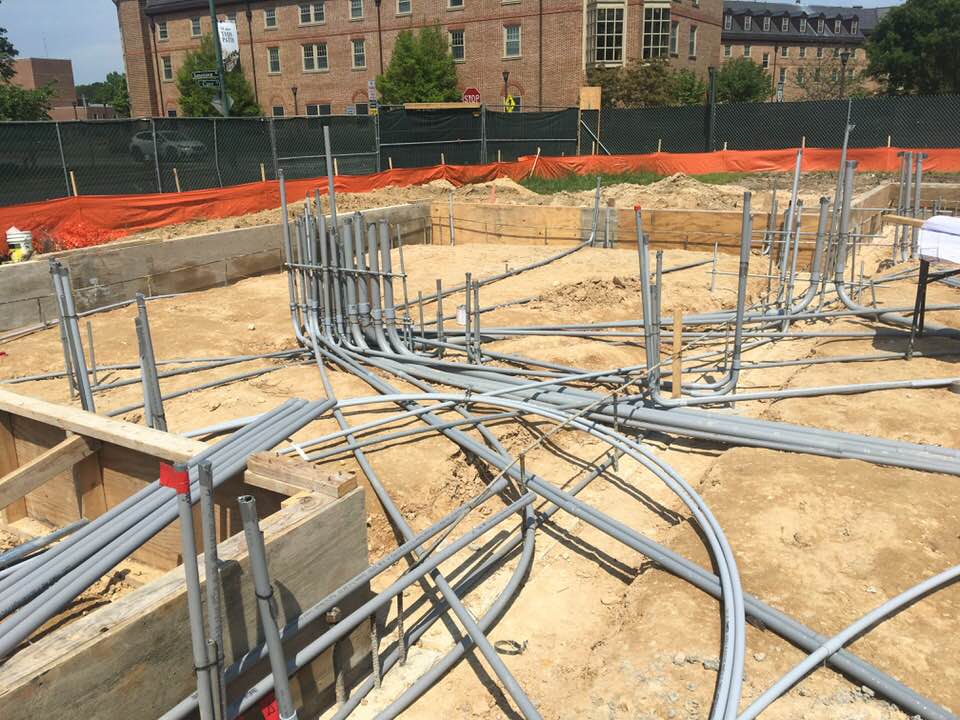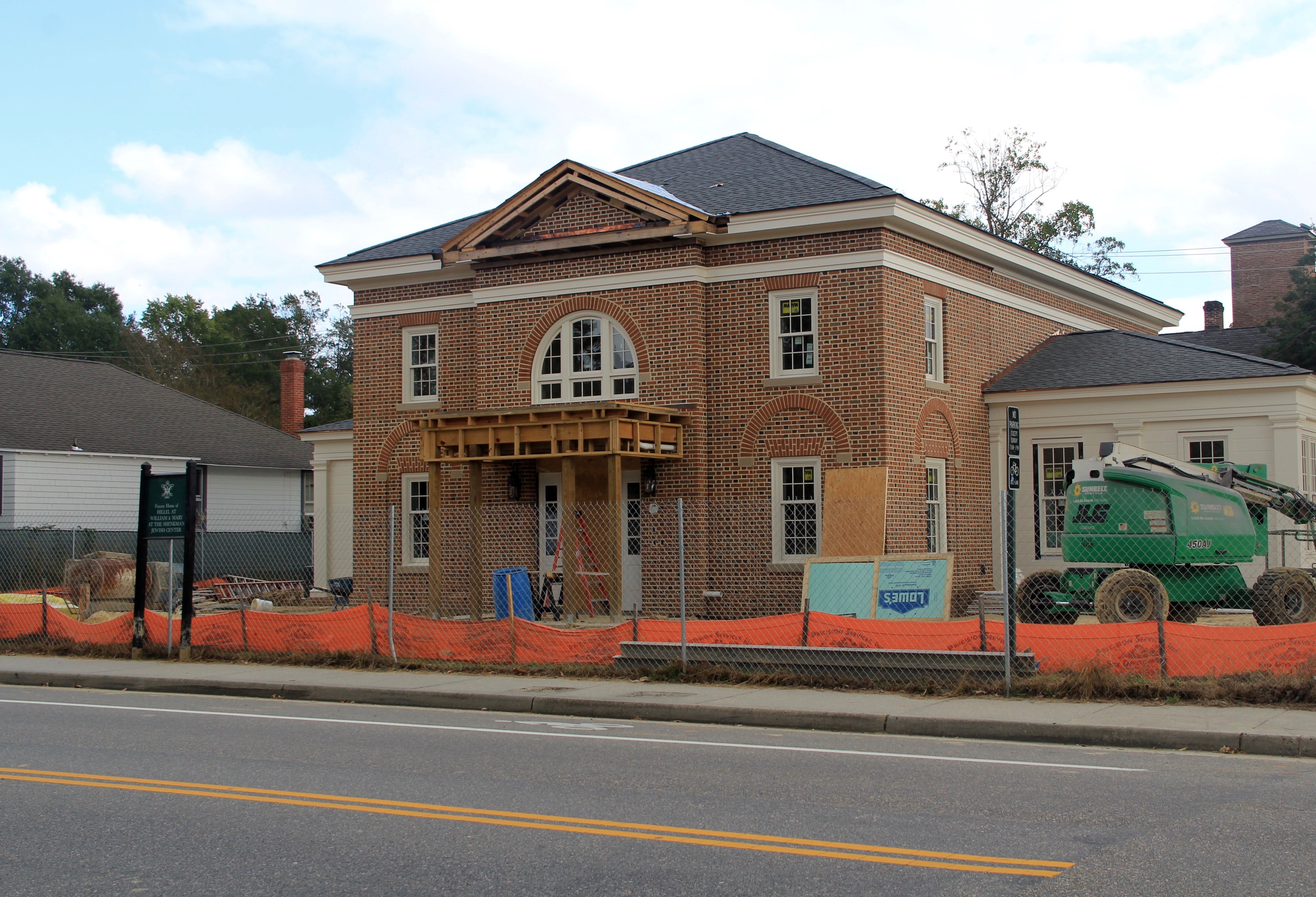IT Helps With Building Campus Up
 Over the summer, W&M IT played a major role in renovation and construction projects taking place across campus. The buildings under construction were:
Over the summer, W&M IT played a major role in renovation and construction projects taking place across campus. The buildings under construction were:
- Alumni House
- Dillard Scene Shop
- Integrated Science Center (Phase 4)
- Kimball Theatre
- Landrum Hall
- Performing Arts Quarter
- Shenkman Jewish Center
- Wellness Center
- West Utilities Plant
Some of the construction projects, such as Landrum Hall, are already underway. From pulling wires in Landrum to installing equipment and hardware in the McLeod-Tyler Wellness Center, which opened in Fall 2018, IT was busy making sure the new buildings had the functions they need. Several other projects, like the Alumni House, are still in the design phase. IT Network Manager Scott Fenstermacher explains, “During the design phase, we’re looking at the needs for power in our telecomm rooms, the number of jack connections, and if there’s any cameras...We plan on current and future wireless needs (since) it's easier to pull cable now rather than wait and pull cable in a occupied building.” Apart from that, IT also relocates fiber and copper which encroaches on the site of construction.
While IT contributes to every building on campus, the extent of IT’s contribution is largely dependent on the function of the building itself. Projects such as the Shenkman Jewish Center, geared towards cultural programming, and the Wellness Center, focused on health promotion, require less audio-visual (AV) input than buildings designated for academic uses. Rooms needing less AV input are outfitted with projectors, screens, and phones, while rooms requiring more AV will receive additional equipment such as podiums and speakers.
John Drummond, Academic Technology Manager, says that IT’s involvement ramps up when working in academic buildings. This is because IT serves as the steward of the academic technology and collaborates with the designers and integrators in order to install the appropriate technology infrastructure in the proper places throughout the building.
 Ideally, Drummond says, IT is involved in the early planning stages of the project to ensure that the department’s needs over the course of construction are fulfilled. “There are stages in the construction project where there is no going back,” Drummond explains. “For example, we need server rooms to be big enough for our purposes right from the get-go. We like to be involved and positively contributing to the design process from the beginning.”
Ideally, Drummond says, IT is involved in the early planning stages of the project to ensure that the department’s needs over the course of construction are fulfilled. “There are stages in the construction project where there is no going back,” Drummond explains. “For example, we need server rooms to be big enough for our purposes right from the get-go. We like to be involved and positively contributing to the design process from the beginning.”
For certain projects, IT defers to the department to select the technology needed for its discipline. For example, the Dillard Scene Shop will serve as the prop-readiness and costume-creation hub of the theatre program while Phi Beta Kappa Memorial Hall undergoes its renovation. AV input for a classroom is very different from the AV input required to support a theater production environment. Drummond explains that the responsibility of selecting the appropriate technology shifts to those with ample theatre experience. “We will be providing the infrastructure that (Dillard Scene Shop) will depend on,” Drummond explains. “But we are going to let the theatre experts pick out the technologies that they want to use in their performance space.”
Nonetheless, from residential to theatrical buildings and beyond, IT is working diligently at construction and renovation sites to bring the William & Mary community its daily technological needs.















